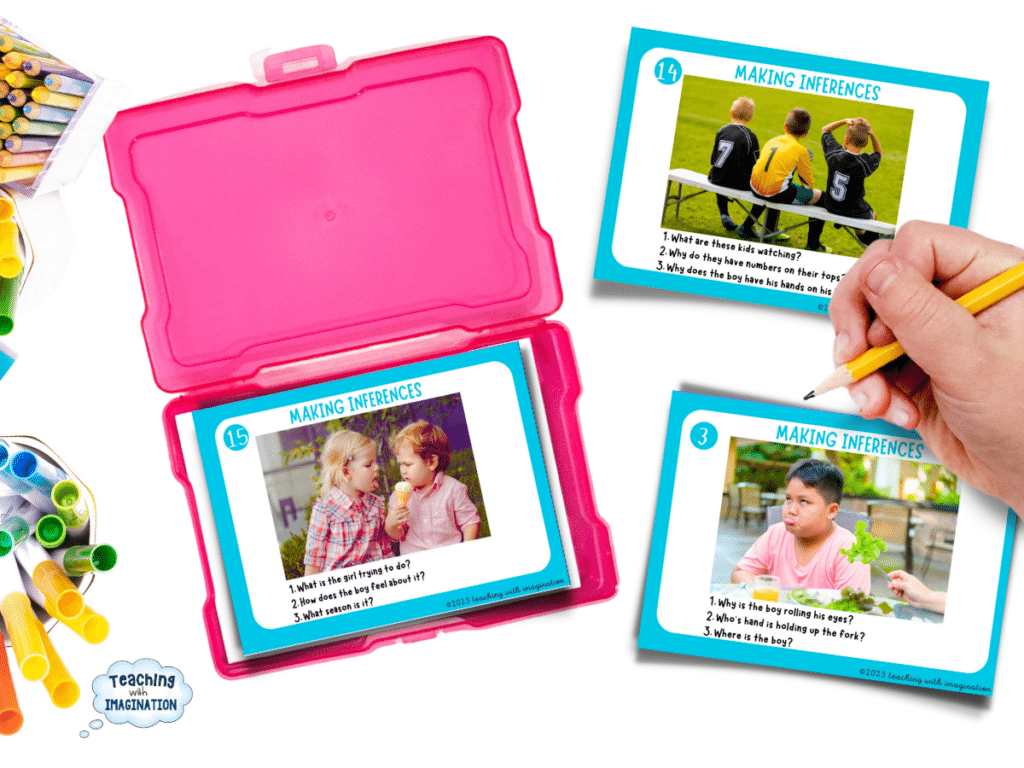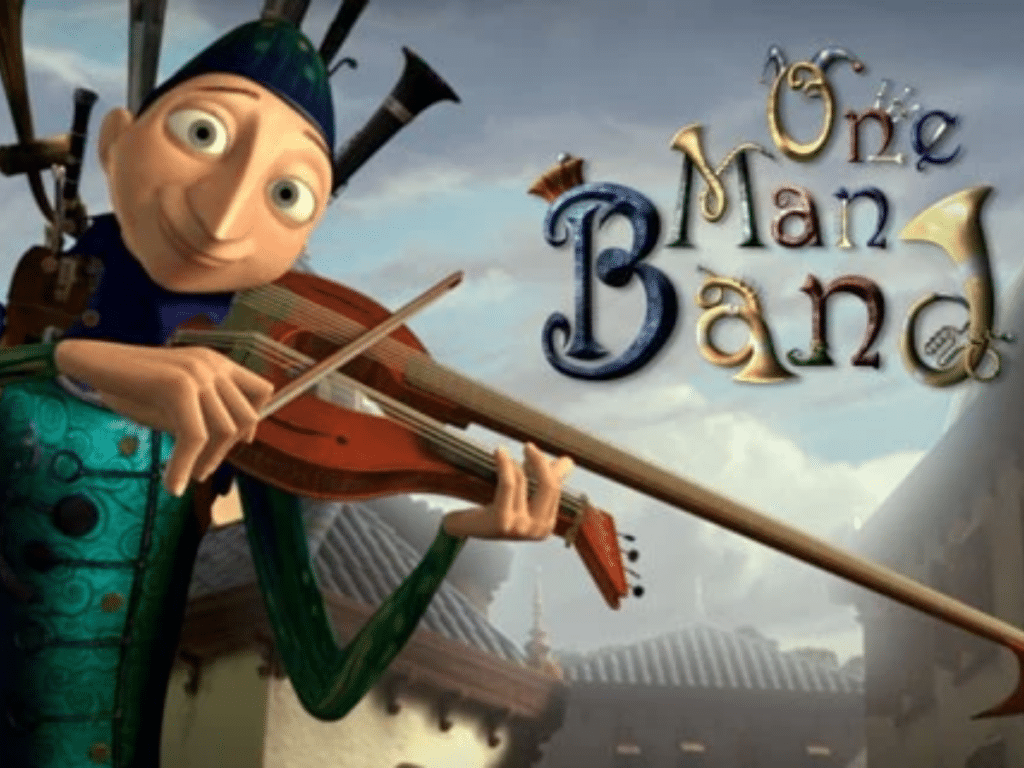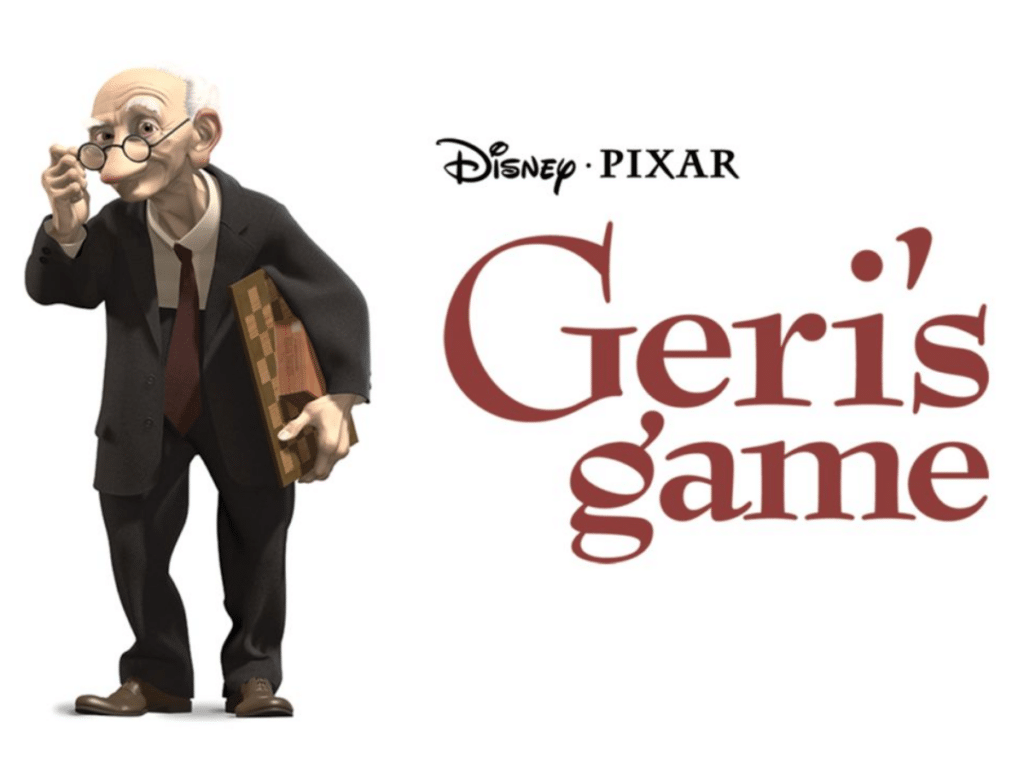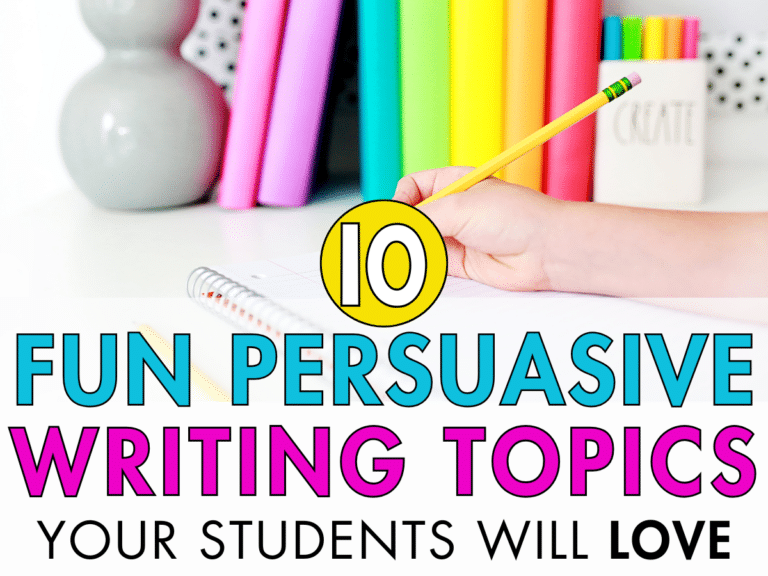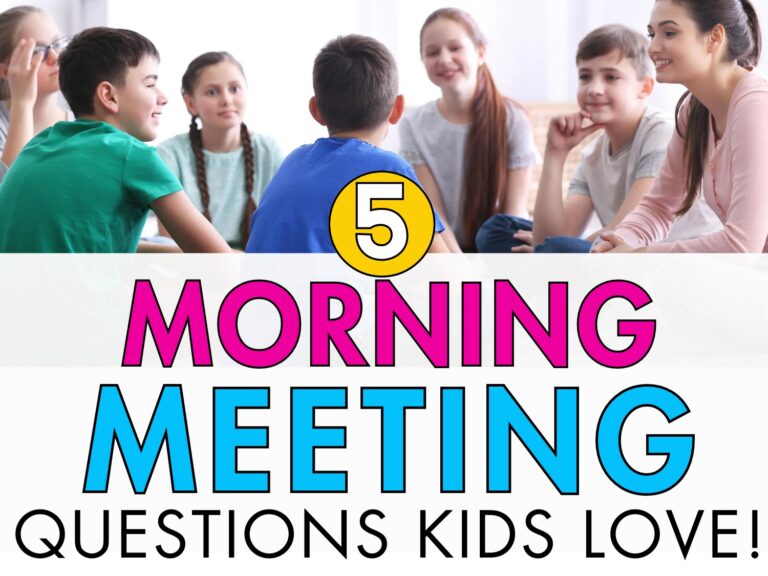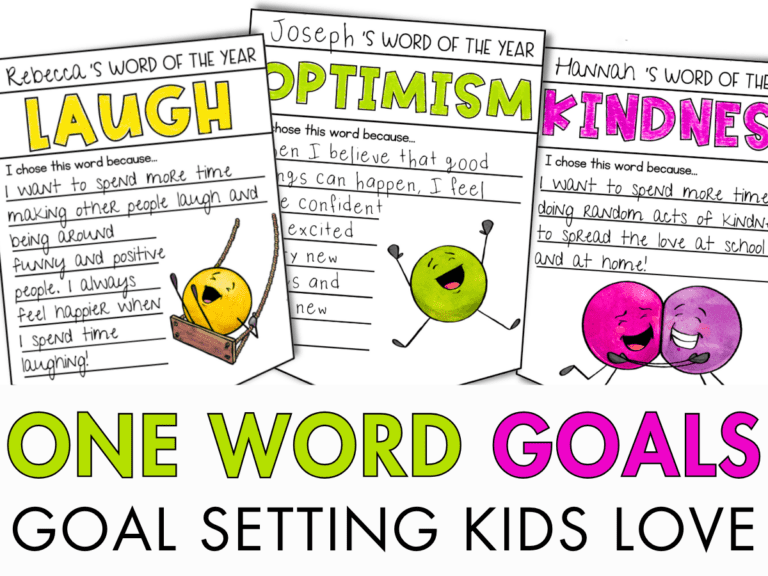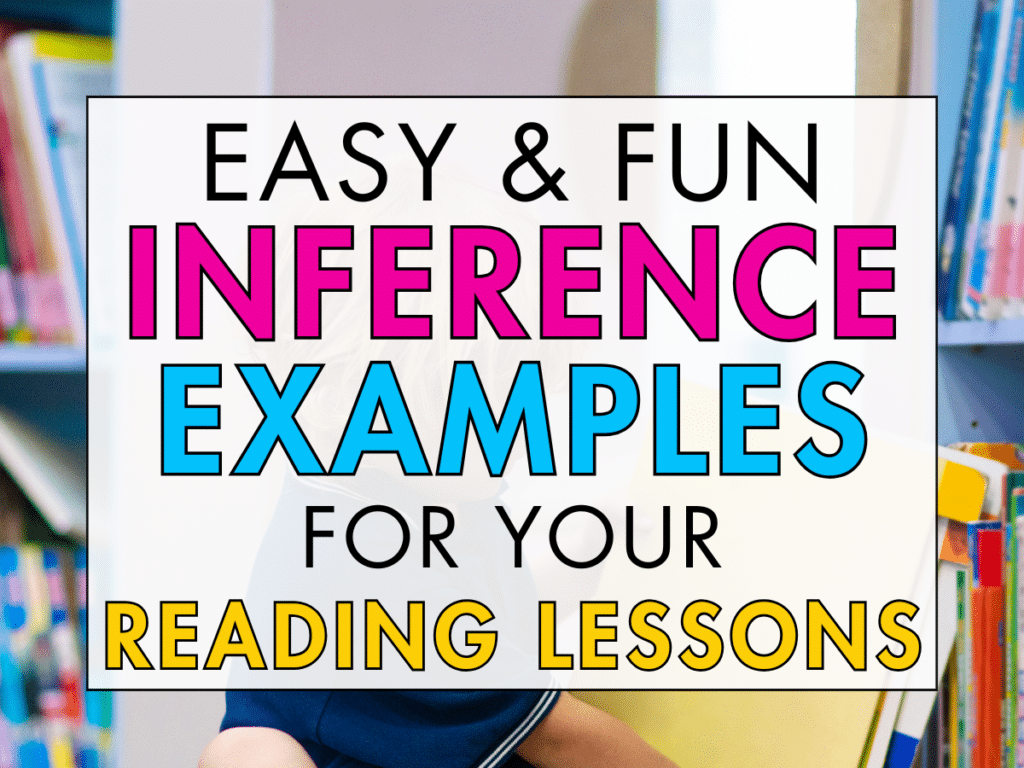
What is an Inference?
An inference is when we figure out something without being directly told. It’s like solving a puzzle using clues from the text and what we already know. For example, if a story says, “Tom put on his rain boots and grabbed an umbrella,” we can make an inference that it’s raining.

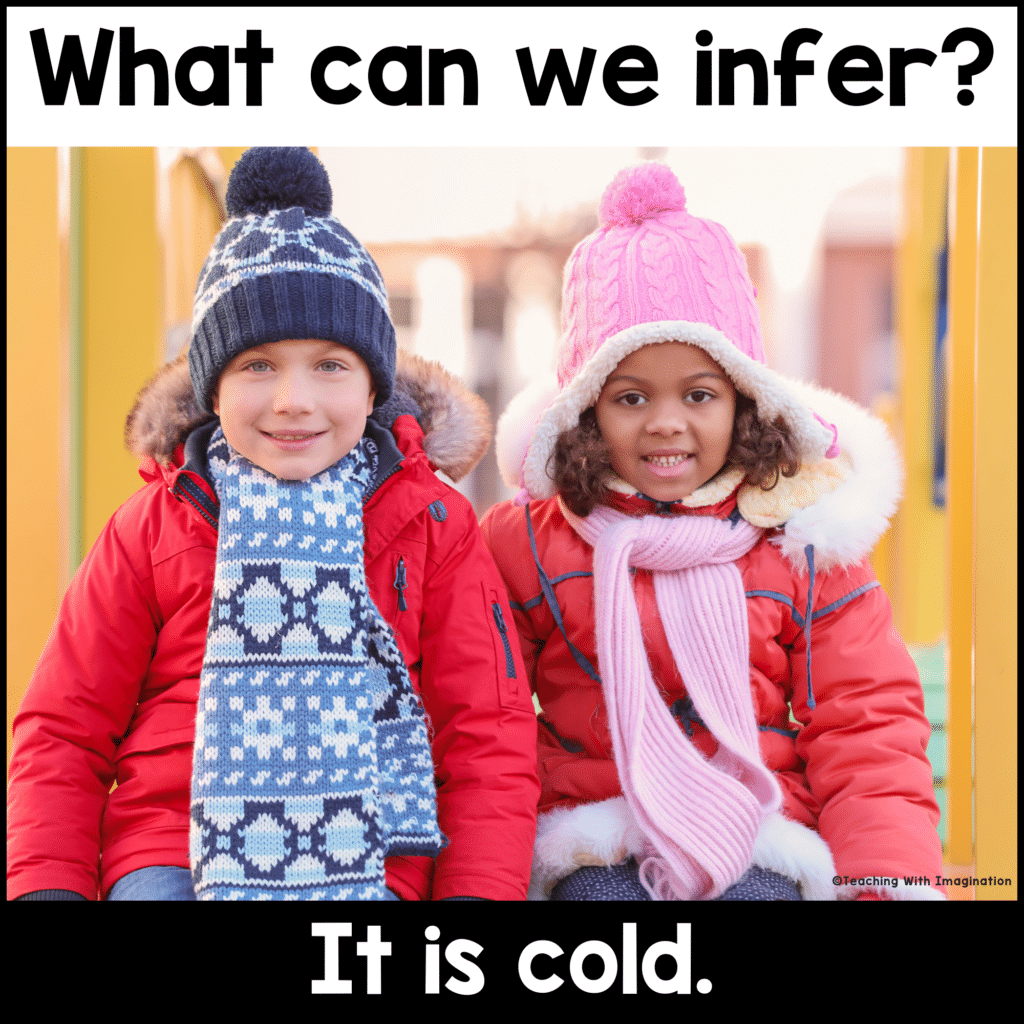

Why Teach Inference?
Teaching inference is crucial because it encourages students to think beyond the text. Inferences allow students to connect the dots, helping them understand character emotions, story settings, and plot twists. They learn to engage actively with the story, which improves comprehension and critical thinking. Practicing inference helps students build skills they’ll use across all subjects—from reading and science to everyday life.
Inferences help students:
- Become better critical thinkers.
- Engage more deeply with reading by finding hidden meanings.
- Apply these skills in real life when interpreting emotions and situations.

Examples of Inferences
Everyday Inference Examples:
We use inferences all the time! For example:
- If someone yawns, we infer they’re tired.
- If someone carries an umbrella, we infer it’s raining.
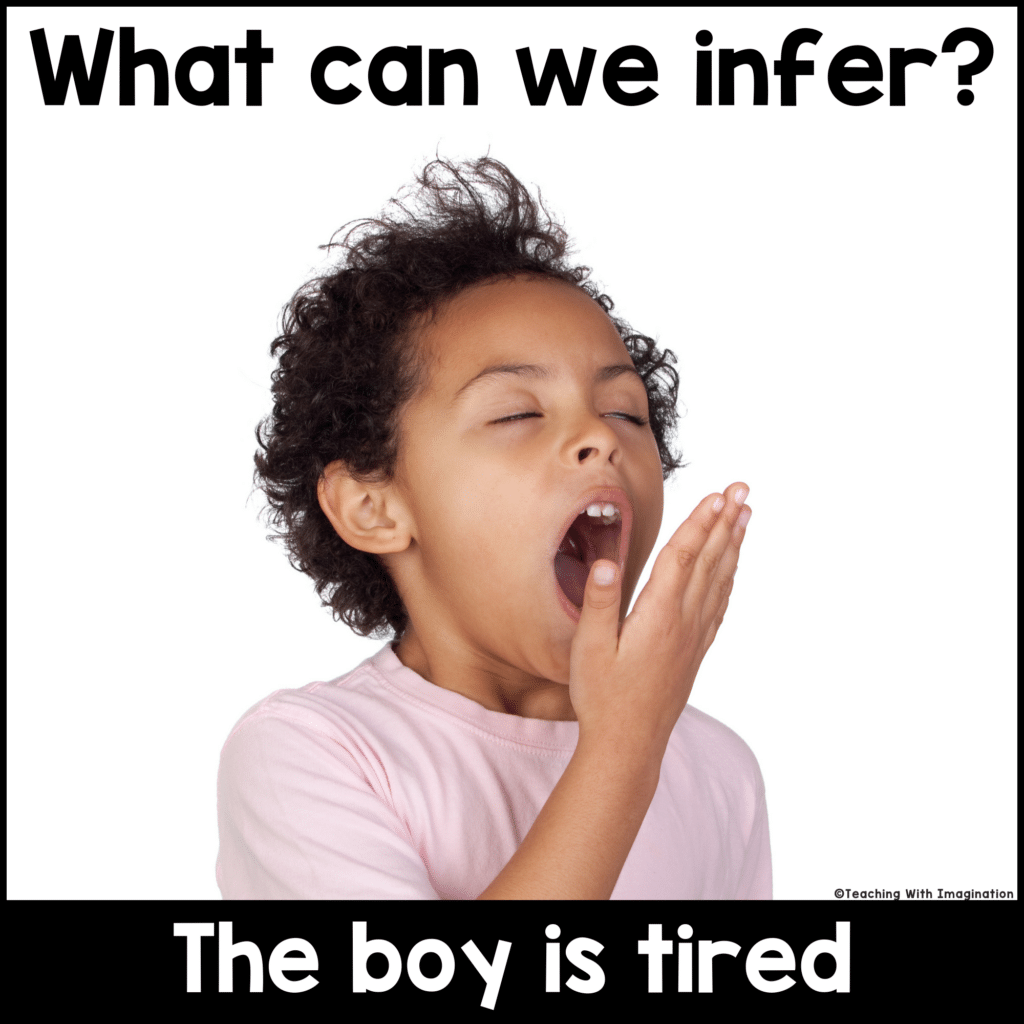
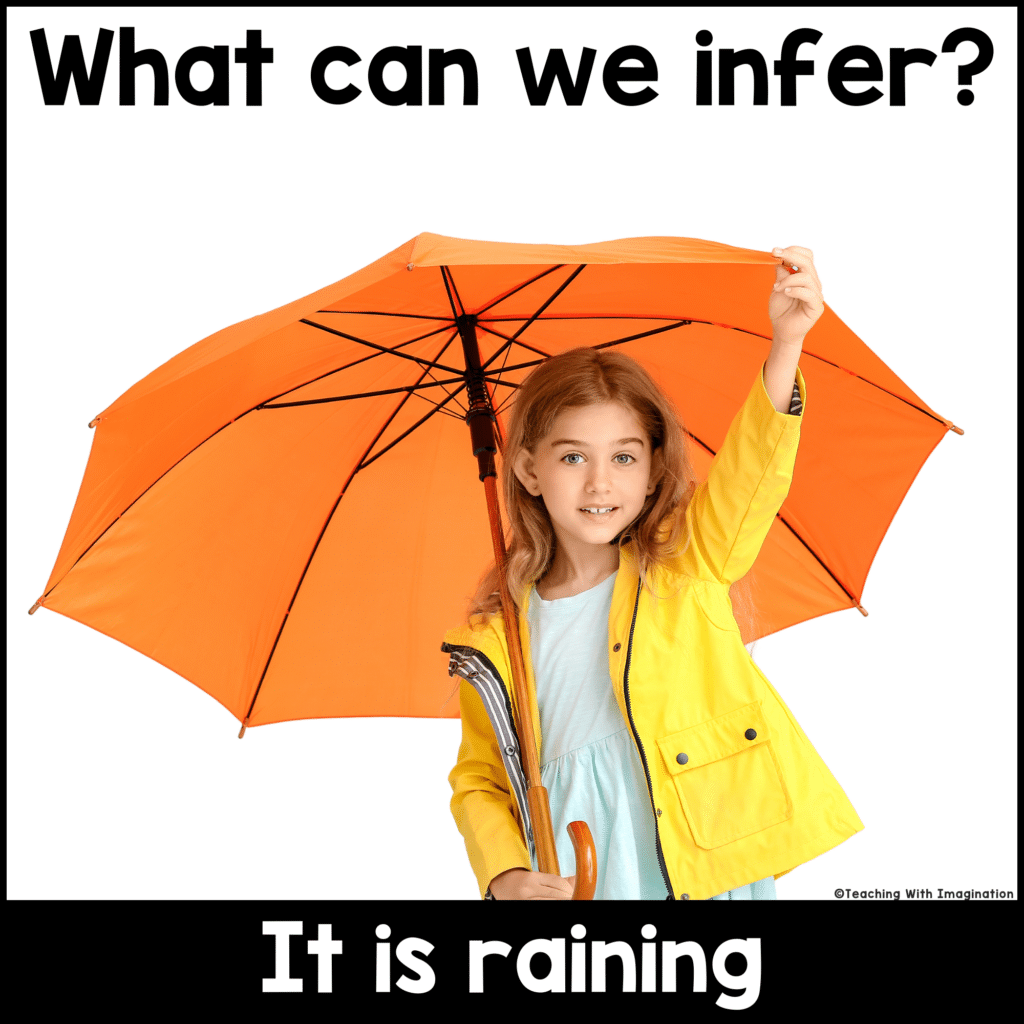
Reading Inference Examples:
In stories, inferences help us understand the plot or characters:
- Text: “Her eyes filled with tears as she stared at the broken toy.”
- Inference: The character is sad about the toy.
- Text: “The kids cheered as the bus pulled up to the amusement park.”
- Inference: The kids are excited about the visit.
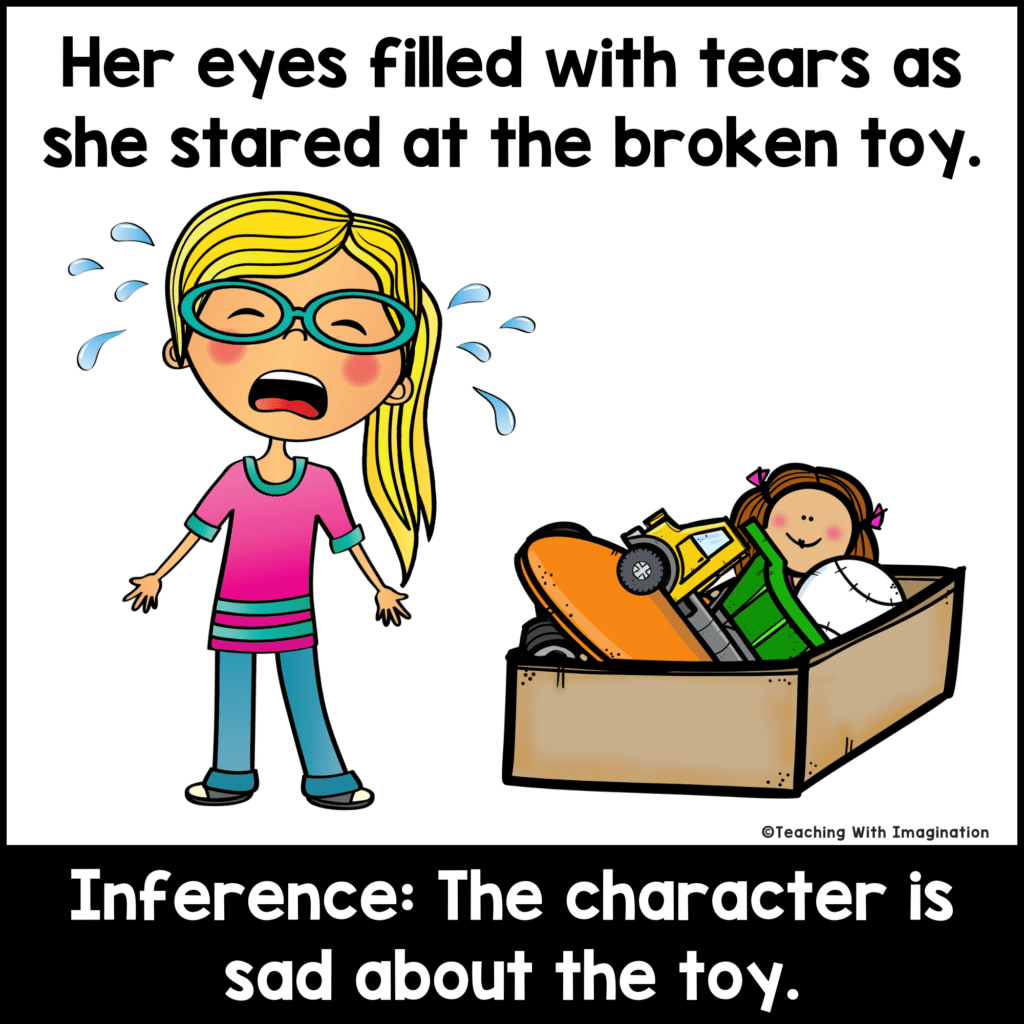
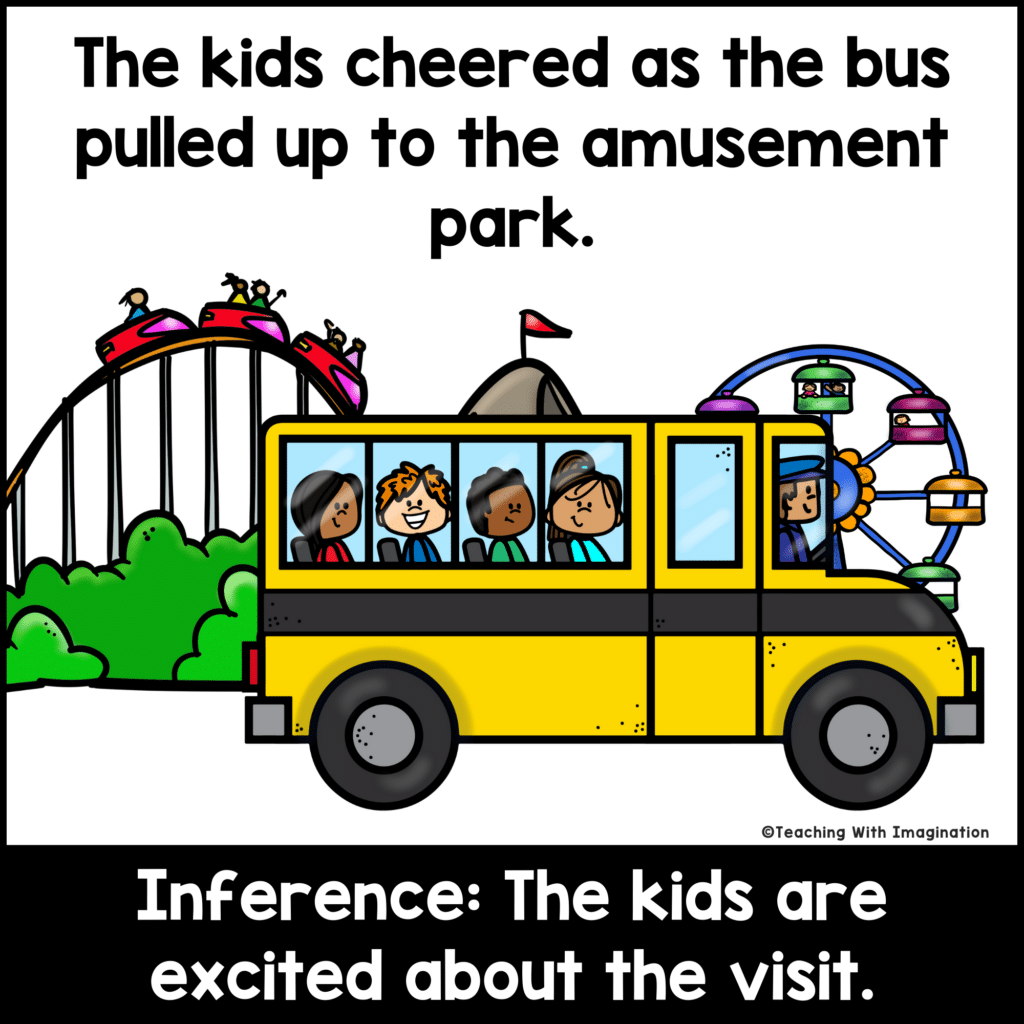
How to Teach Inference with Fun Inference Examples
Here are some fun and simple ways to introduce inference in the classroom:
1. Guessing Game: Begin with straightforward inferences. Say, “I see someone wearing a heavy coat and shivering. What can we infer?” (Answer: It’s cold.)This helps students understand how to use clues to make inferences.
2. Picture Inference with Books: Use rich illustrations from books to encourage visual inferences.In The Stranger by Chris Van Allsburg, for example, the mysterious actions of the stranger provide lots of clues for students to infer what’s going on. Other great books for this are Where the Wild Things Are and Tuesday by David Wiesner.
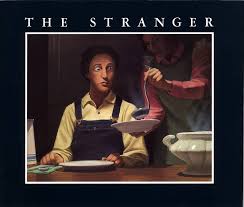
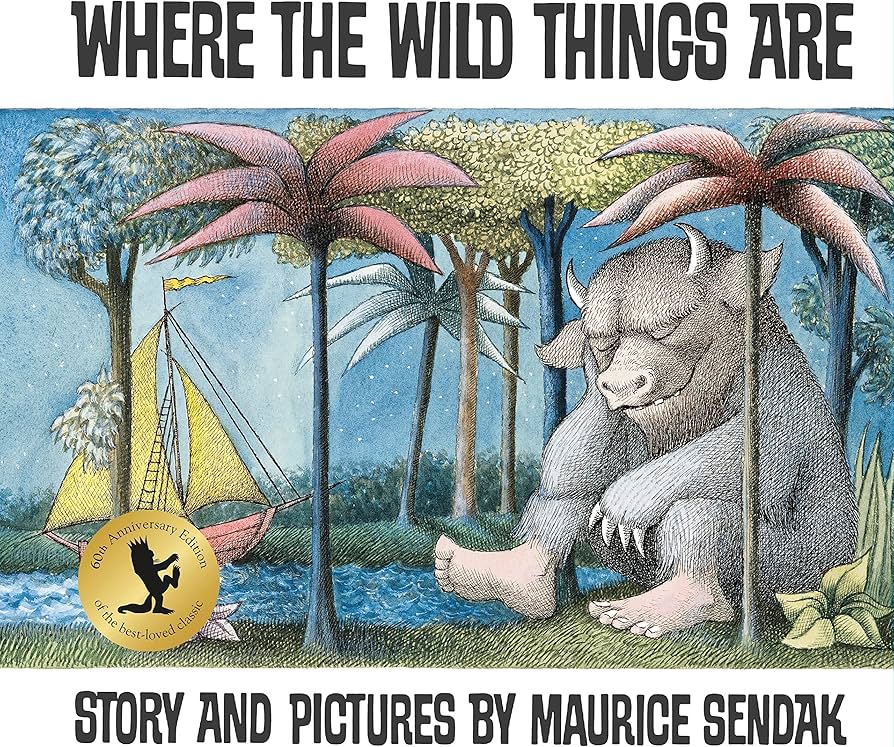
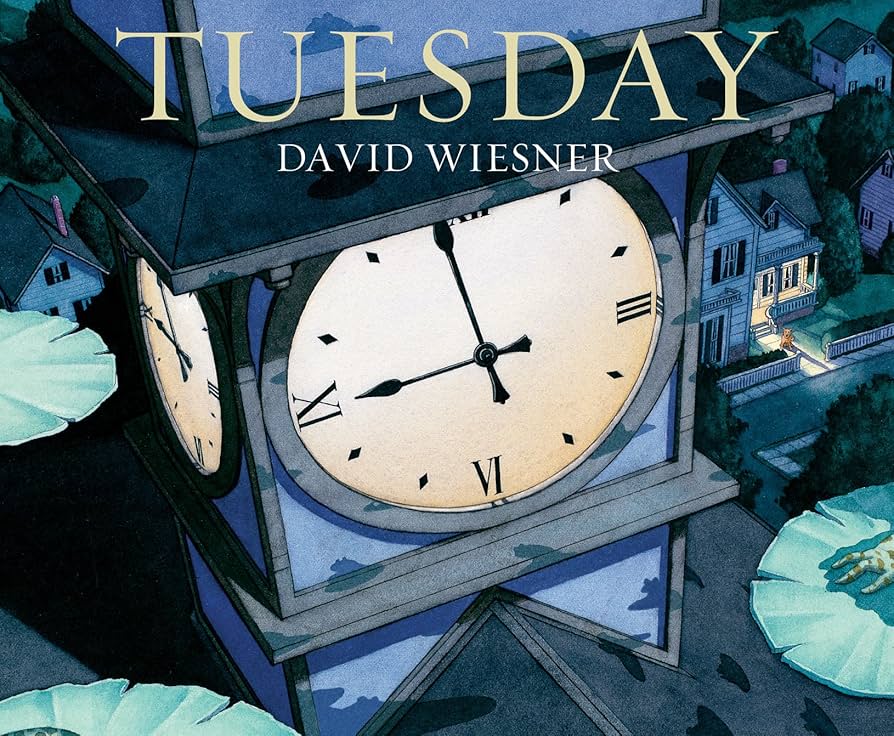
3. Make Inferences Using Photos
Using photos helps students practice inference with visual clues alone. Show a photo, such as a scene with a family at the beach or kids walking in the rain. Ask questions like, “How do you think they feel?” or “What season might it be?” This encourages students to observe details like expressions, body language, and setting, forming inferences based on their observations. I love using task cards and graphic organizers for independent practice (you can visit the resources by clicking on the pictures below).
4. Use Pixar Shorts or Short Video Clips
Short films like Pixar’s Piper, For the Birds, One Man Band, and Geri’s Game are perfect for inference practice because they rely on visual storytelling. Play a clip and pause at key moments to ask, “What do you think this character is feeling?” or “What might happen next based on their actions?”
Each of these shorts allows students to use context clues from character expressions, body language, and music to infer meaning, helping them develop their inference skills in a fun, engaging way. I’ve linked the YouTube shorts to the pictures below for easy access!
5. Create Inference Mystery Bags
Inference mystery bags add a hands-on element to your lessons! Fill each bag with real items (or use pictures) that give clues about an imagined person, like glasses, a pencil, or a ticket. Ask students to infer who the bag might belong to and explain why. This activity builds curiosity and deduction skills using everyday items.
I have a set of 24 ready-to-go inference mystery bags designed for 1st and 2nd graders. They’re packed with fun and perfect for engaging young students!
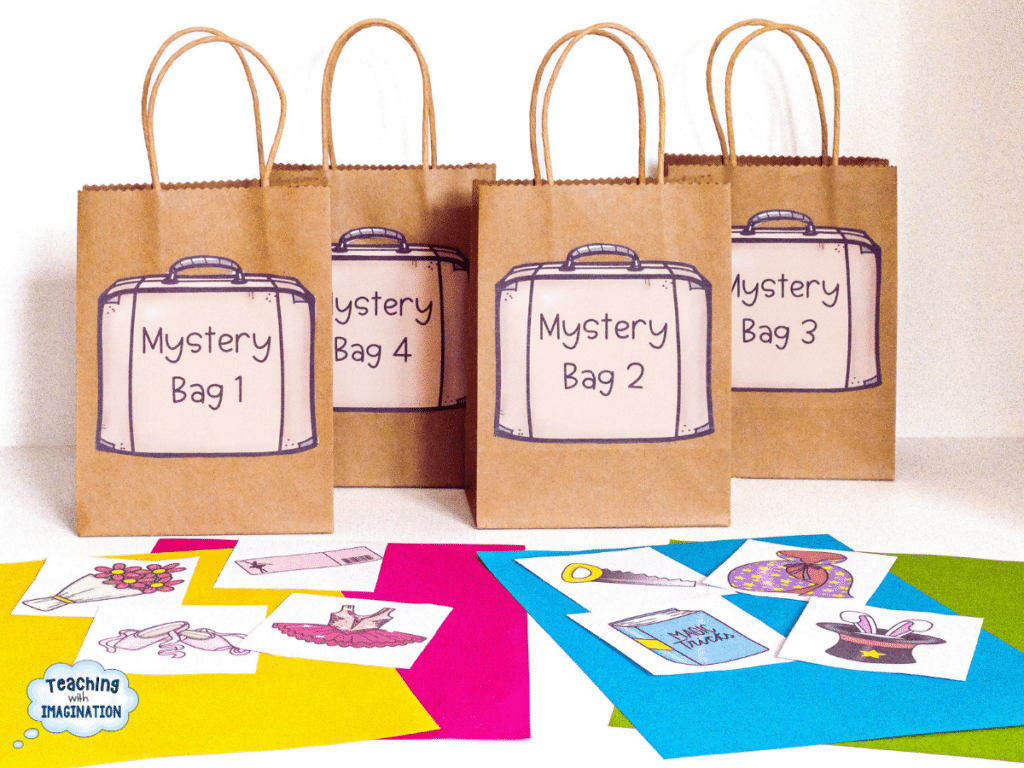
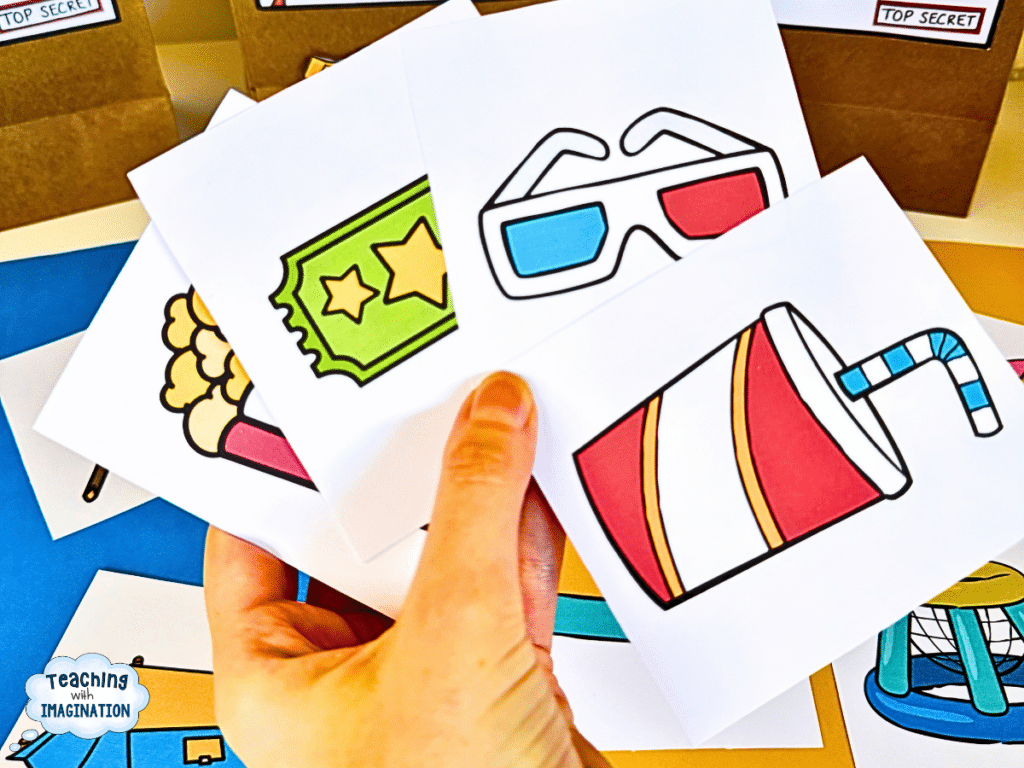
6. Inference Charts: Create a two-column chart with “Clues from the Text” and “What We Infer.” For example:
- Clue: “The boy was sweating and looked nervous before his presentation.”
- Inference example: “He’s probably anxious about speaking.”
7. Inference Detective Cases
Use mystery reading passages to engage students in making inferences to solve the case. This is my upper elementary students’ favorite way to practice inferences! I’ve created a whole series of inference mysteries tailored just for them.
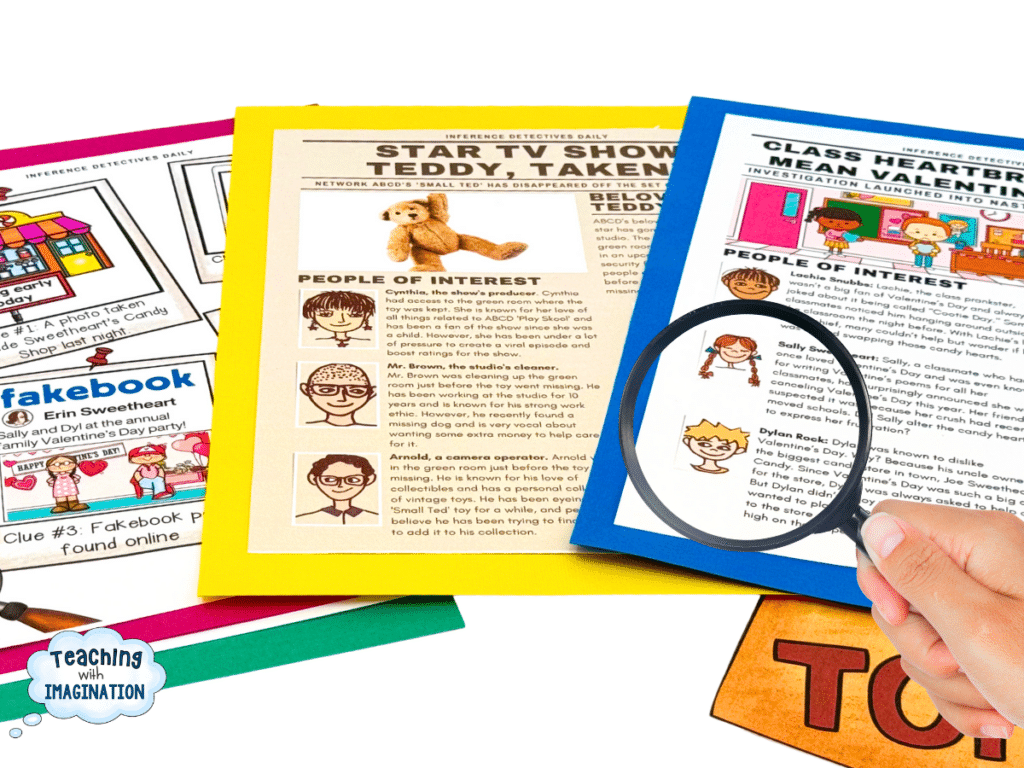
Try a free case by entering your name and email below or grab a 6 pack of Detective Inference Mysteries HERE!
Each case includes:
- A crime summary
- 3 suspects
- 5 clues
- A fun, two-minute reveal video
These cases allow students to sharpen their inference skills through immersive, hands-on mysteries they love to solve!
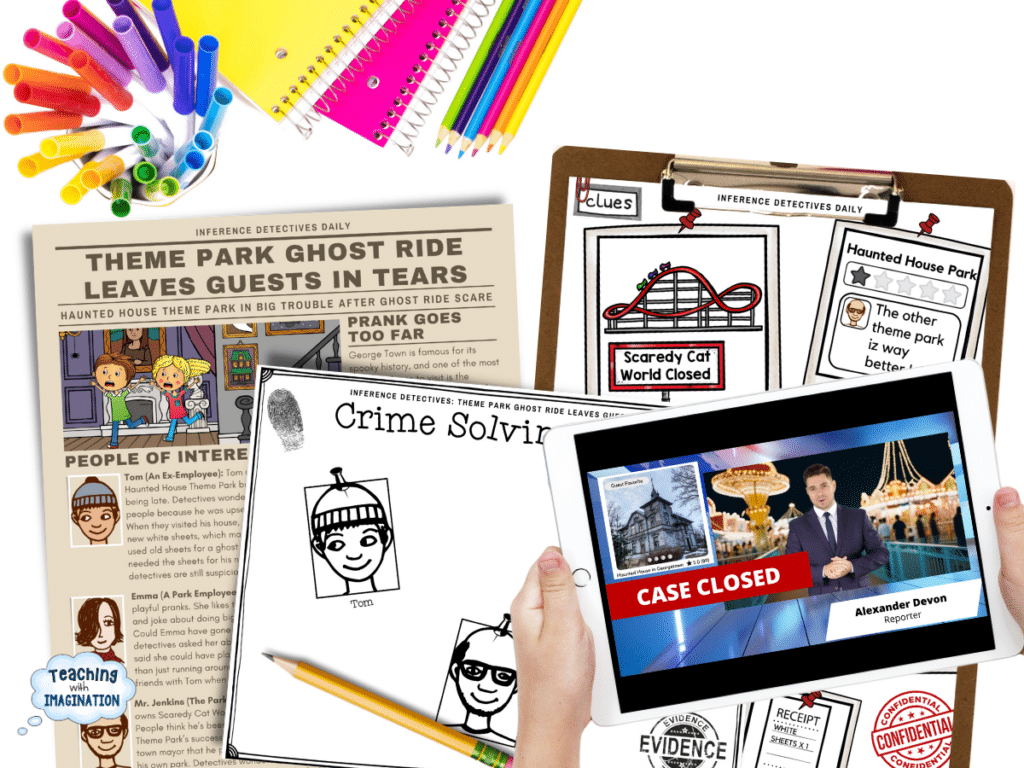
What’s the Difference Between Predicting and Inferring?
While students often mix up predicting and inferring, providing clear inference examples can clarify this.
- Prediction: Guessing what will happen next.
- Inference: Using clues to understand what’s happening now.
For example:
- Prediction: “I think it will rain because the clouds are dark.”
- Inference: “The character is wearing a jacket, so it must be cold.”
Using both inference examples and prediction examples side by side helps students grasp the difference.
Top Tips for Teaching Inferences
- Use Books with Strong Clues: Books like Officer Buckle and Gloria or The Mysteries of Harris Burdick offer lots of opportunities for students to practice making inferences based on clues.
- Create Graphic Organizers: Use organizers where students match clues from the text with their inferences, making the process clearer as they see how observations lead to conclusions.
- Detective Activity: Set up a mini-mystery in your classroom. For instance, place an open backpack near the door with scattered papers on the floor. Ask, “What can we infer happened?” (Maybe someone left in a hurry!) This is a fun, hands-on way to explore making inferences.
- Use Visual Prompts: Show your students wordless picture books or illustrations, and ask them to infer what’s happening. This helps students practice drawing conclusions from visual clues. For instance, ask, “What can we infer from a picture of a child holding a broken toy and crying?”
Conclusion
Teaching inference will strengthen your students’ reading comprehension and critical thinking. It’s not just about understanding what’s written—it’s about uncovering what’s implied. By introducing fun activities, picture books, and interactive ways to practice inference, you’ll help your students sharpen this skill and become more engaged readers.
Incorporate these activities regularly, and soon, your students will become experts at making inferences and understanding texts on a deeper level!


